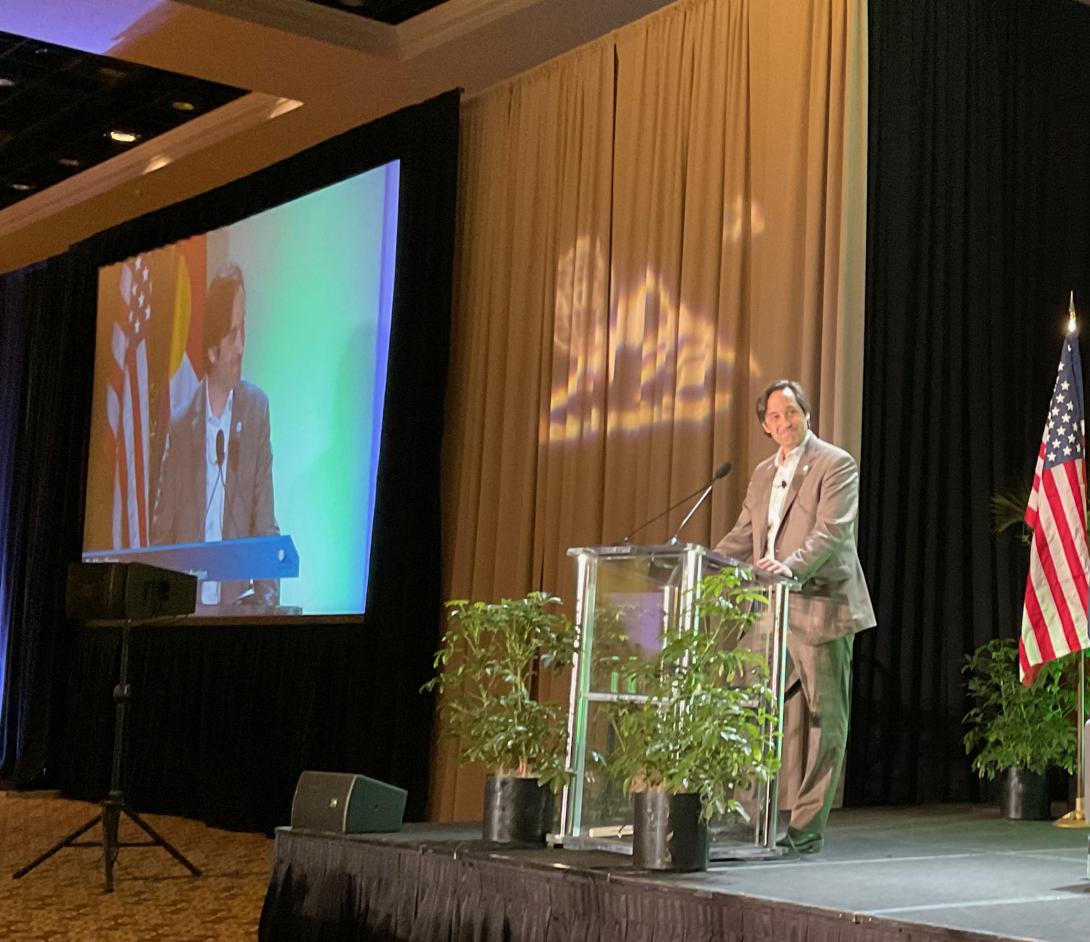Quantum Technologies Will Impact the Military
Quantum-based computing will, as is known, easily break the current cryptologic schemes widely used by the U.S. military and its allies. However, there are other quantum-based technologies to understand, including fully entangled network transmission, radio frequency communication and quantum clocks, advised Max Perez, vice president, Quantum Data Productization at Infleqtion, speaking yesterday at the AFCEA Rocky Mountain Cyberspace Symposium. The company, previously known as ColdQuanta and based in Boulder, Colorado, was created by researchers from the University of Colorado 16 years ago.
Today, Perez sees the growing interest and funding levels of venture capitalists as confirmation of the future role of quantum-based technologies. Infleqtion recently raised $110 million in seed funding and has added facilities in the United States, the United Kingdom and Australia.
“We were maybe a half dozen graduate students and postdocs [postdoctoral students] seeking to bring one technology to reality," he said. “Over the last five years, we've gone from a couple of dozen people to over 200 researchers around the world.”
Perez confirmed that the most disruptive technology to computer security is quantum computing.
“As we all have heard, if you have a quantum computer that is powerful enough and has error correction, it can certainly break current RSA [Rivest-Shamir-Adleman] encryption protocols,” he said. “These technologies will take a while to establish, but there are current road maps to get to a scaled quantum computer that can break these protocols.”
However, the security community has responded by developing post-quantum encryption that cannot be broken easily by quantum computers, including the Computer Security Resource Center at the National Institute of Standards and Technology’s creation of quantum-resistant cryptography. “What this did was light a fire under the security community to develop alternative protocols,” he said.
In addition to powerful quantum computing, Perez cites so-called fully entangled network transmission as one of “the most exciting areas” of quantum solutions.
“[This is] where the information is encoded in the quantum states of the photons that are transmitting information,” he explained. “This provides physical security over transmission.”
The quantum scientist confirmed that China is already developing this technology—through its Micius satellite, which can beam so-called entangled photons of information long distances.
“The challenge here is that some of our near-peer adversaries have a head start in this particular set of technologies, especially China with their Micius mission, which demonstrated space around the transmission of entangled information,” Perez cited. “The good news is that there are multiple labs in the U.S. that are also demonstrating fully entangled transmissions of information that will be superior to what was demonstrated under the Micius.”

This is probably the technology you will see commercially rolled out from the quantum community [first]. I believe you will start to see the next generation of atomic clocks for both defense and commercial applications emerge over the next two years.
Another promising quantum communications solution is quantum radio frequency (RF) reception.
“This provides a technology that can spread information over a much broader spectrum available to date and is transmitted at very low powers,” he explained. “This will provide a near-term path to providing over-the-air transmission on local and mid-air networks for information in a much more secure way than is currently used today using standard protocols.”
In addition, quantum-based clocks, which Perez considers the most established quantum technology, will provide improvements to the 100-year-old atomic clocks.
“Atomic clocks are not particularly exciting, but they lie at the heart of almost every single information, communications and data network that's used today,” he noted. “They provide a synchronization capability between nodes. Currently, all of that time is served fundamentally from our GPS system, which is well known to not be a particularly secure way of transmitting timing information. Under zero trust, it cannot be considered a trusted source of information. And so, some alternatives have been sought for some time for transmitting time over GPS.”
Perez expects mobile hardware sources and trusted timing information solutions to come with the next wave of quantum technologies—quantum 2.0 technologies. Here, the United States’ pursuit of domestically produced microchips under the CHIPS Act will provide a path for device-level trusted and secure timing information.
“This is probably the technology you will see commercially rolled out from the quantum community [first],” he ventured. “I believe you will start to see the next generation of atomic clocks for both defense and commercial applications emerge over the next two years.”




Comments